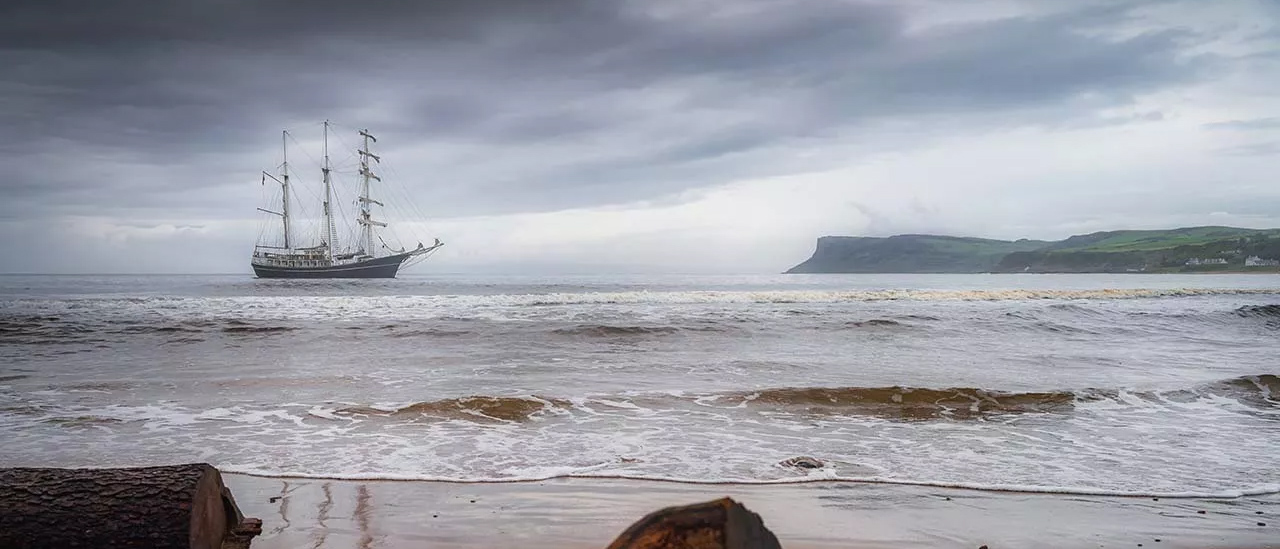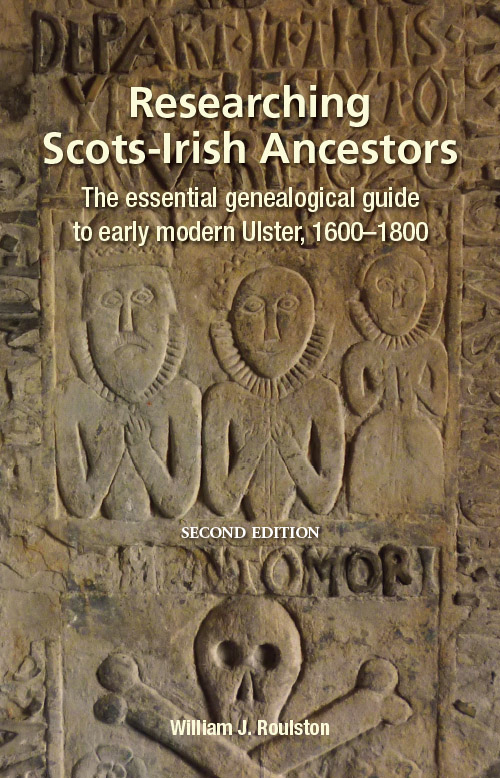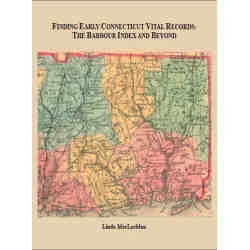
William J. Roulston’s incomparable Researching Scots-Irish Ancestors is a comprehensive, 600-page guide to the vast collection of sources that can help researchers trace their Scots-Irish forebears from the United States to their origins in Ireland. Here are three samples taken from different sections of the work illustrating just a few of the many sources therein.
(1) This first document is taken Chapter Four, which covers sources that are unique to the 17th-century.
4.4.2 The Civil Survey
The Civil Survey was carried out under the Cromwellian administration in Ireland between 1654 and 1656. An edition of the Civil Survey for counties Donegal, Londonderry and Tyrone – the only Ulster counties for which the survey survives in full – was published by the Irish Manuscripts Commission in 1937 under the editorship of R. C. Simington. The Civil Survey includes a good deal of topographical material through the detailed descriptions of the boundaries of many of the baronies and parishes and sometimes even individual properties. Lands that had been forfeited by the native Irish are listed separately, as are lands owned by the Church (i.e. the Church of Ireland). For each of the baronies in the three counties there is a personal name index, with an index to lands at the end of the volume.
The information contained in the Civil Survey for each parish is tabulated and includes for each denomination of land the name of the proprietor, the extent of profitable and unprofitable acres and the value of the lands in 1640. The proprietor was not always the outright owner of the land since some freeholders and leaseholders were also included. under this column. The ethnic background and religion of the individual is usually given and occasionally additional information about him. For example, Will More, a freeholder in the parish of Clogher, was a ‘horseman at the Seidge of Derry’. This was a siege that took place in 1649 when an army of Presbyterians, angry at the execution of Charles I, briefly encamped. around Derry before dispersing.
Supplementary information may be provided, such as details of tenure and rents paid by individuals leasing the lands from the proprietors. In County Donegal several leases were issued by the bishop of Raphoe in 1636 which included the proviso that the tenant was to pay a specified sum of money- in one case £250 – towards the cost of building the bishop’s palace. The parish of Raphoe is especially well documented. Those who held property in the town of Raphoe typically possessed a house and garden along with a few acres and grazing rights.
With regard to the listings of forfeited. lands, these are helpful in identifying native proprietors before the 1641 rising. The Civil Survey for the barony of Dungannon reveals that most of the Irish landowners were generally in possession of no more than one or two townlands. In addition, the Civil Survey reveals something of the transfer of lands from native Irish to settler that had . . .
(2) The next sample comes from Chapter 5, which is confined to 18th-century sources.
5.3.2 Records in the Public Record Office of Northern Ireland
The Public Record Office of Northern Ireland has a very large collection of records concerning this period. In the 1970s PRON! produced separate education facsimiles relating to the United Irishmen and the 1798 Rebellion.
In 1998, it produced a source list of documents relevant to this period. Summarized below are some of the more valuable collections of records, followed by a selection of other items of interest
Caldwell Papers
The Caldwell Papers include letters and various other documents concerning the involvement in the rebellion of members of the Caldwell family of Harmony Hill, near Ballymoney, County Antrim, and their subsequent emigration to America (T3541). A fascinating item in this collection is the reminiscences of John Caldwell junior entitled, ‘Particulars of historyof a North County Irish Family’, which is available in typescript (T3541). In some detail, Caldwell recounted his family background, upbringing, education, business affairs, and his involvement in politics and the United Irishmen. Of particular interest is his description of his voyage across the Atlantic in 1799 on the Peggy, a ship that Caldwell had chartered to carry him and over 100 fellow United Irishmen to America. A study of this document is David A. Wilson, ‘John Caldwell’s memoir: a case study in Ulster American radicalism’ in David A. Wilson and Mark G. Spencer (eds), Ulster Presbyterians in the Atlantic World: Religion, Politics and Identity (2006), pp 104-28. PRONI also has copies of documents relating to the trial of Richard Caldwell (T3058/l). Other records relating to the Caldwell family can be found under reference D 1518.
Cleland Papers
Letters and papers relating to the efforts at suppressing the United Irishmen by Rev. John Cleland, a County Down-based Anglican clergyman who served as Lord Londonderry’s land agent, have been archived under reference D714 (some of the material has been microfilmed under reference MIC507). These include a series of espionage reports, made by Nicholas Magin. the ‘Saintfield informer’, which give details of meetings of the Provincial Committee of the Society of United Irishman, 1797-8, and a series of depositions made before Cleland. For example, on 22 July 1798 the following deposition was sworn before Cleland:
Jas Petey of Carnilea, labourer … made oath that Jas Gray of Bangor, muslin weaver, administered the Oath of United Irish Men to him . . .
(3) The final example comes from the volume’s long Appendix I, which itemizes various records on a parish-by parish basis within Ulster; in this case, the parish of Devenish within County Fermanagh:
DEVENISH PARISH, COUNTY FERMANAGH
Barony: Magheraboy
Diocese: Clogher
Places: Garrison, Monea
Graveyards: Deverush CI (Monea), Devenish Island
Church records
CI Devenish
Baptisms, 1706, 1798, 1800-marriages, 1800-; vestry minutes, 1739-
The vestry minutes include information on the allocation of space for seats within the parish church, 1744; and the seating arrangements in 1802.
Estate papers
Archdale estate; Clogher bishopric estate; Ely estate; Huntingdon estate; Montgomery estate; O’Brien estate
Census substitutes
HMR, Re!C (Protestants and Catholics), FL
Other records
An account of the riches in the parishes of Devenish and Boho, 1695{long list of names) – printed in Steele, The Parish of Devenish, pp 78-80
Copy memorial of the ‘Protestant Inhabitants of the Parishes of Kilbarren and Garrison, also (Innismac) saint who live nearer Belleck than anyocher church’, c. 1788 – DIO/2/9/660A
Memorial from the ‘… Protestant Inhabitants of the Extreme end of the Parish of Dcvenish .. .’, c. 1790- DIO/2/9/449
Publications
W.B. Steele, The Parish of Devenish, County Fermanagh: Materials for Its History (1937)
E.G. Elliott, The Parish of Devenish and Boho (1990)
P. McGuinness, Garrison: A Frontier for Two Thousand Yean (1998)





